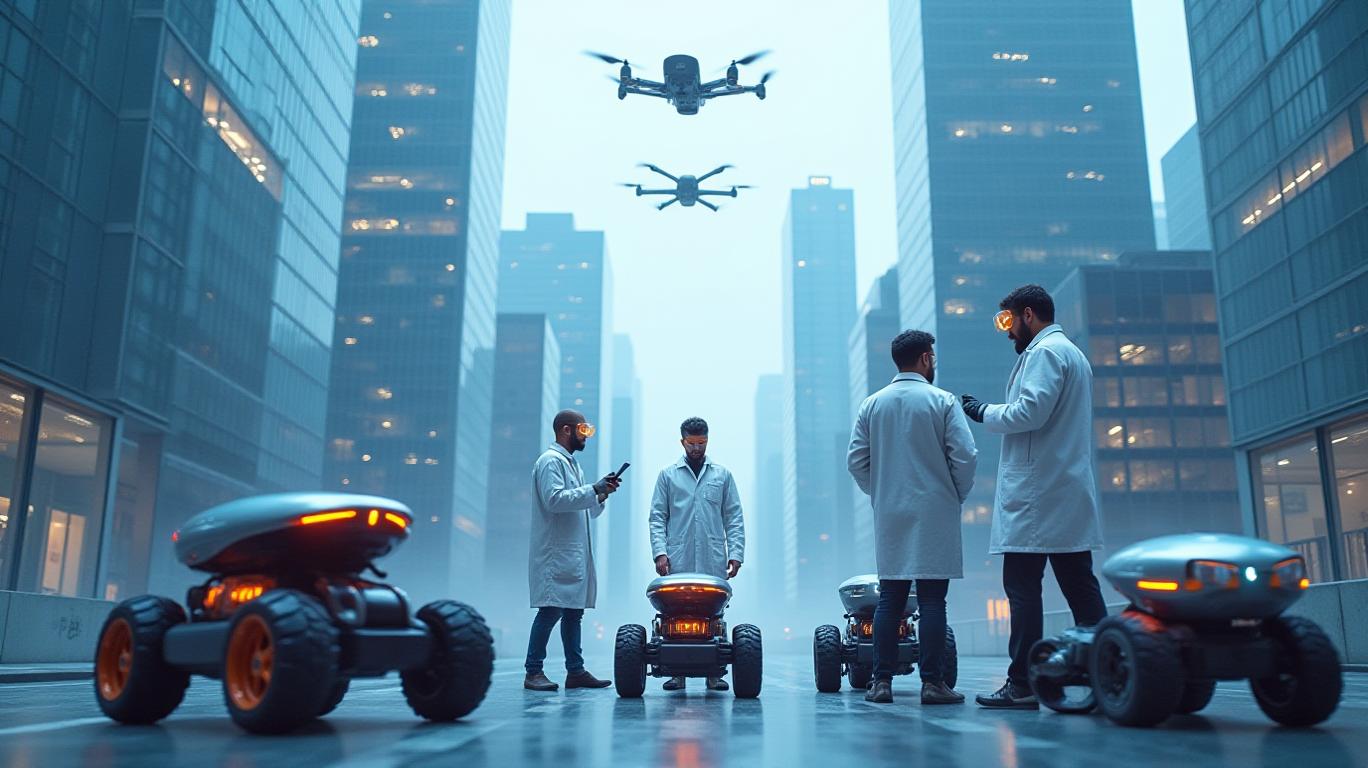Robotics Renaissance: Why New York’s Ecosystem is Silicon Valley’s Successor in the Automation Age
New York City, long the financial and cultural capital of the world, is now emerging as a global hub for robotics innovation. Backed by venture capital influx, world-class academic research, and strategic global partnerships, the city’s robotics ecosystem is poised to capture a disproportionate share of McKinsey’s projected $910 billion robotics market by 2040. With a sector-wide compound annual growth rate (CAGR) of 23%, investors ignoring New York’s robotics boom risk missing out on one of the decade’s most lucrative opportunities.
The Perfect Storm: NYC’s Robotics Ecosystem

New York’s robotics ecosystem combines three critical advantages:
- Venture Capital Surge:
NYC’s venture capital (VC) landscape has shifted decisively toward robotics. In 2023, robotics startups in the region raised $2.1 billion, a 70% increase over 2020. This growth is outpacing even traditional tech hubs like Silicon Valley, where robotics funding grew by just 35% over the same period.
Firms like Flexport Robotics (logistics automation) and Nuro (autonomous delivery) have anchored the city’s reputation, while new entrants like NYC-based RoboStack (AI-driven warehouse systems) are attracting Series A rounds exceeding $50 million.
Academic Powerhouses:
Universities such as Columbia, NYU, and Cornell have become engines of robotics innovation. NYU’s Robotics Lab and Columbia’s AI & Robotics Initiative are pioneering breakthroughs in swarm robotics and AI-driven navigation. These institutions also serve as talent pipelines, graduating 1,200 robotics engineers annually—30% of whom stay in NYC to join startups or corporate R&D teams.Global Partnerships:
NYC’s position as a global gateway enables partnerships with Asian and European robotics leaders. For instance, SoftBank Robotics (Japan) and ABB Robotics (Switzerland) have established R&D outposts in NYC, while startups like Mighty AI (training data for robotics) collaborate with European manufacturers to scale industrial automation.
McKinsey’s Forecast: A $910B Prize, and NYC’s Slice
While McKinsey’s 2040 robotics market forecast of $910 billion (from a $21 billion baseline in 2022) applies globally, New York’s ecosystem is uniquely positioned to capture a significant share. The 23% CAGR driving this growth—fueled by AI integration, manufacturing automation, and healthcare robotics—aligns with NYC’s strengths in data science, logistics, and healthcare infrastructure.
Consider this:
- Healthcare Robotics: NYC’s Mount Sinai Hospital and Memorial Sloan Kettering are early adopters of surgical robotics, partnering with local startups to reduce recovery times and costs.
- Logistics Automation: With J.F.K. Airport and Port Newark, NYC handles 25% of U.S. air freight. Automation startups like Locus Robotics (warehouse systems) are already optimizing these networks.
Why Invest Now?
The robotics sector is entering its “scaling phase,” as noted in McKinsey’s 2024 report. Early movers in NYC’s ecosystem are reaping rewards:
- ROI on robotics startups in NYC averaged 28% annually between 2020–2023, outperforming broader tech venture returns.
- Public robotics ETFs like ROBO (tracking robotics and automation stocks) have surged 45% since 2021, with NYC-linked firms like iRobot and Brookfield Robotics as top holdings.
Immediate Action for Investors
The time to act is now. Here’s how to capitalize:
1. Target NYC-linked robotics firms: Prioritize companies with R&D hubs or partnerships in NYC, such as SoftBank Robotics (autonomous retail) or Honeywell Aerospace (drone systems).
2. Leverage robotics ETFs: Allocate to ROBO or ROBOX, which track global robotics leaders but disproportionately include NYC-based innovators.
3. Bet on AI-infused robotics: NYC’s AI talent and data infrastructure position it to dominate in AI-driven robotics sub-sectors like agricultural automation (e.g., FarmWise Robotics) and construction robotics (e.g., Built Robotics).
Risks and Mitigation
While risks like regulatory delays or hardware cost inflation exist, NYC’s ecosystem mitigates them through:
- Policy advocacy: Organizations like NYC Tech lobby for robotics-friendly regulations.
- Hardware innovation: Local firms like Carbon Robotics (agricultural robots) are reducing costs via mass production partnerships.
Conclusion: The Next Decade Belongs to NYC’s Robotics Pioneers
With a 23% CAGR, McKinsey’s $910B robotics market is no distant dream—it’s a reality being built today in New York’s labs, warehouses, and boardrooms. Investors who recognize NYC’s strategic advantages now will be positioned to claim outsized returns as the robotics revolution accelerates. The question is not whether to act, but how quickly you can allocate capital before the rest of the world catches on.
Don’t wait for the next McKinsey report—act now. The future of robotics is being written in NYC, and it’s time to invest in the next Silicon Valley.

Comments
No comments yet